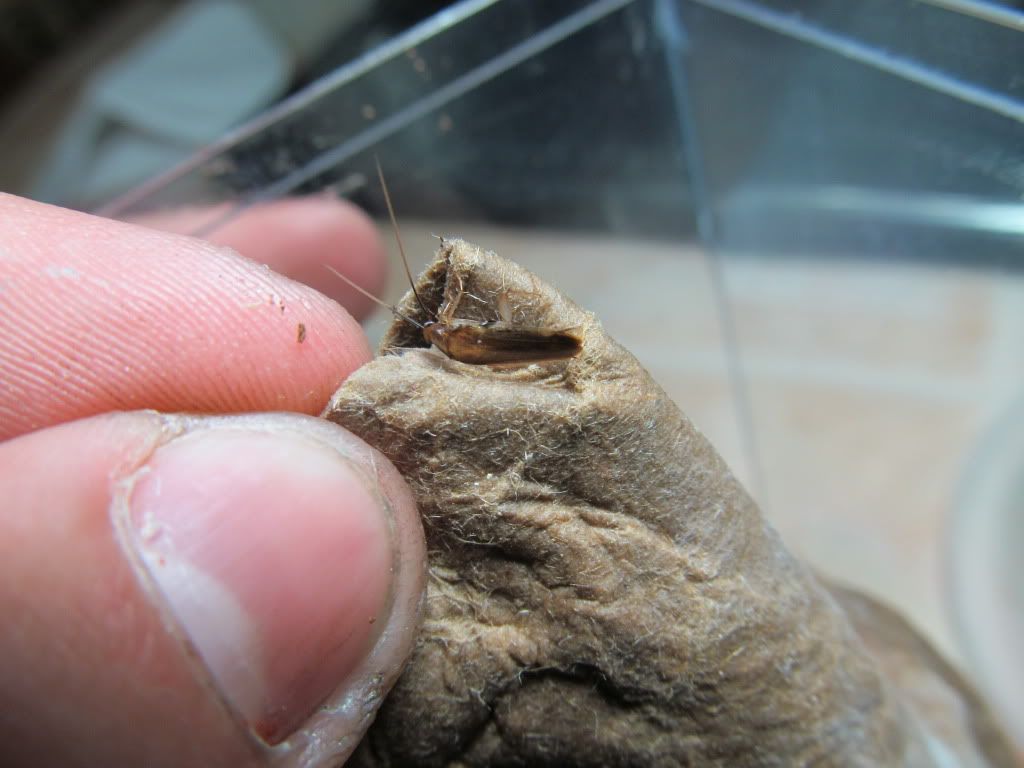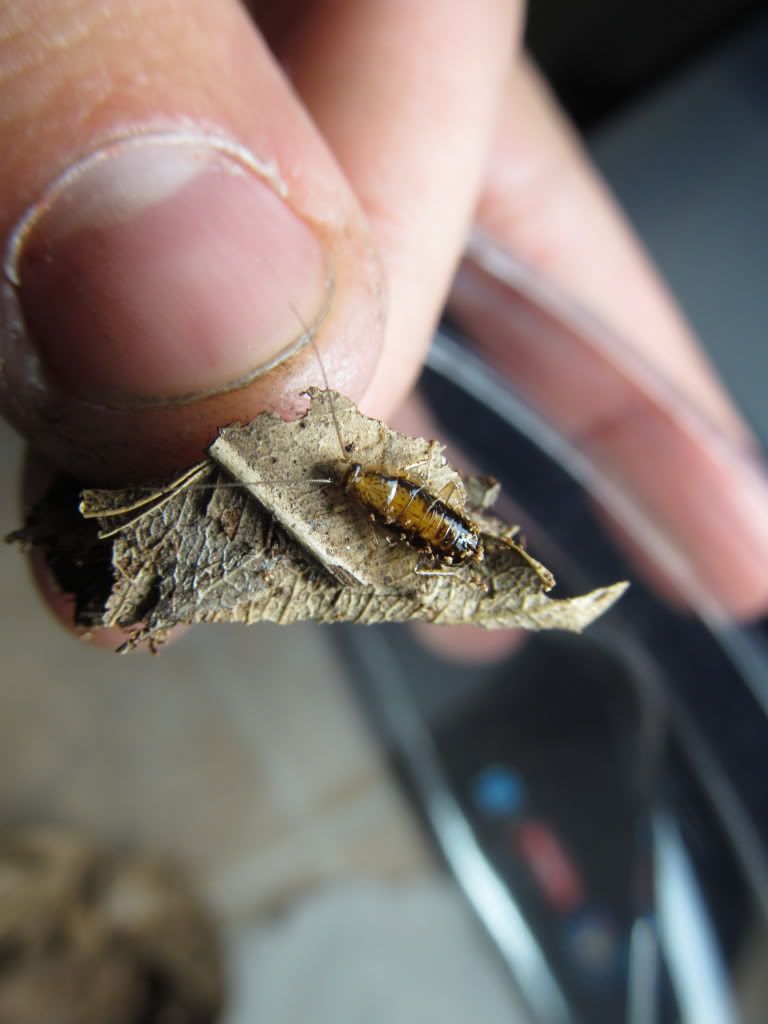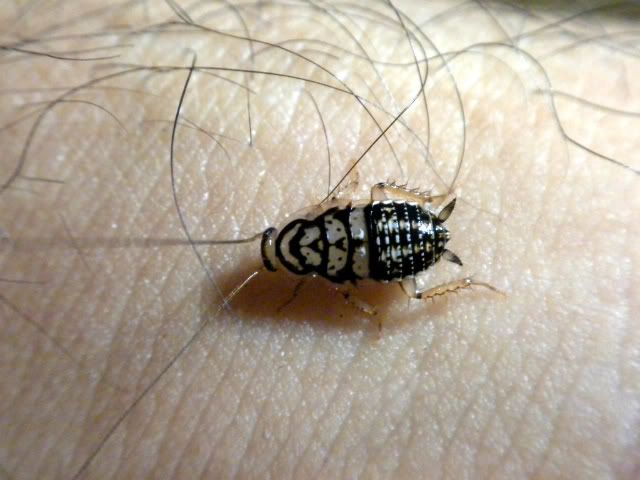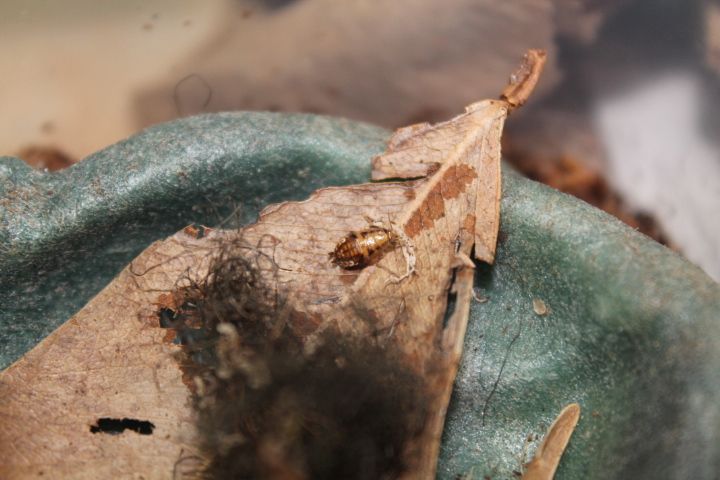Alex
Seventh Instar
Hello everyone.
I would like to discuss captive husbandry of roaches smaller than a german roach per say.
In my experience I have had minimal sucess in haveing kept them alive for more than a few weeks.
I have used slightly ventilated cages with "seasoned substrate"(good decomposition and spring tails) with a gradient from 85 to 72 room temp.
Here are pics of species I have failed to keep alive.


Here is A gamma and I managed to get this spp to have ooths "but nothing ever came of them"

A species I found on a mango branch has been doing well so far.

Cheers everyone.
I would like to discuss captive husbandry of roaches smaller than a german roach per say.
In my experience I have had minimal sucess in haveing kept them alive for more than a few weeks.
I have used slightly ventilated cages with "seasoned substrate"(good decomposition and spring tails) with a gradient from 85 to 72 room temp.
Here are pics of species I have failed to keep alive.


Here is A gamma and I managed to get this spp to have ooths "but nothing ever came of them"

A species I found on a mango branch has been doing well so far.

Cheers everyone.
